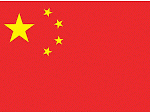April 12, 2018
 In early March, the Trump administration announced a 25 percent tariff on steel and a 10 percent tariff on aluminum imports from all countries except Canada and Mexico. Exceptions to the tariffs were subsequently granted to several countries. The tariffs clearly targeted China, which produces about half of the world’s steel.
In early March, the Trump administration announced a 25 percent tariff on steel and a 10 percent tariff on aluminum imports from all countries except Canada and Mexico. Exceptions to the tariffs were subsequently granted to several countries. The tariffs clearly targeted China, which produces about half of the world’s steel.
On April 2, China announced retaliatory tariffs on 128 U.S. products. A 15 percent tariff would be applied to U.S. pork and aluminum products and a 25 percent tariff on nuts, fruit, wine and other items. The list of products subject to tariffs is estimated to be worth $3 billion.
On April 3, the Trump administration published a list of products of Chinese origin to be hit with a 25 percent tariff. The list includes about 1,300 goods, estimated at $50 billion. The items were chosen to directly target China’s “Made in China 2025” initiative. Trade analysts compiled a list of products that benefit from China’s industrial policies and then refined it to minimize U.S. economic disruption. The finished list was compiled by selecting from the products with the least consumer impact.
On April 4, China announced plans to impose a 25 percent tariff on 108 U.S. goods, which includes soybeans, motor vehicles, tobacco, and bovine meat, worth roughly $50 billion.
China’s Ministry of Commerce announced the date of implementation will depend on if, and when, the U.S. imposes tariffs on the selected Chinese products. The Trump administration has signaled willingness to work towards a resolution with China. However, the administration will make its final decision after consulting with domestic industry and the private sector through a public hearing, set for May 15 and a public comment process that will end on May 22.
On April 5, President Trump indicated a desire to examine the need to impose $100 billion in additional tariffs. In an acknowledgement of the disproportionate effect being felt by agriculture from this dispute, President Trump instructed U.S. Secretary of Agriculture, Sonny Perdue, to use his broad authority to implement a plan to protect farmers and agricultural interests. “We’ll make it up to them,” Trump told reporters ahead of a meeting with his Cabinet. “The farmers will be better off than they ever were. It will take a little while to get there, but it could be very quick, actually.”
While the Trump administration has revealed few details, one possibility would be through the Commodity Credit Corporation (CCC). The CCC is under the supervision of the Secretary and was created to aid producers through loans, purchases, and making available facilities and materials needed in agricultural production and marketing. Its price support, storage, and reserve programs, and its domestic acquisition and disposal activities, are carried out primarily through the personnel and facilities of the Farm Service Agency (FSA).
For video, photos and other resources, view Resources.
For media inquiries or
interview requests, contact Hinda Mitchell.